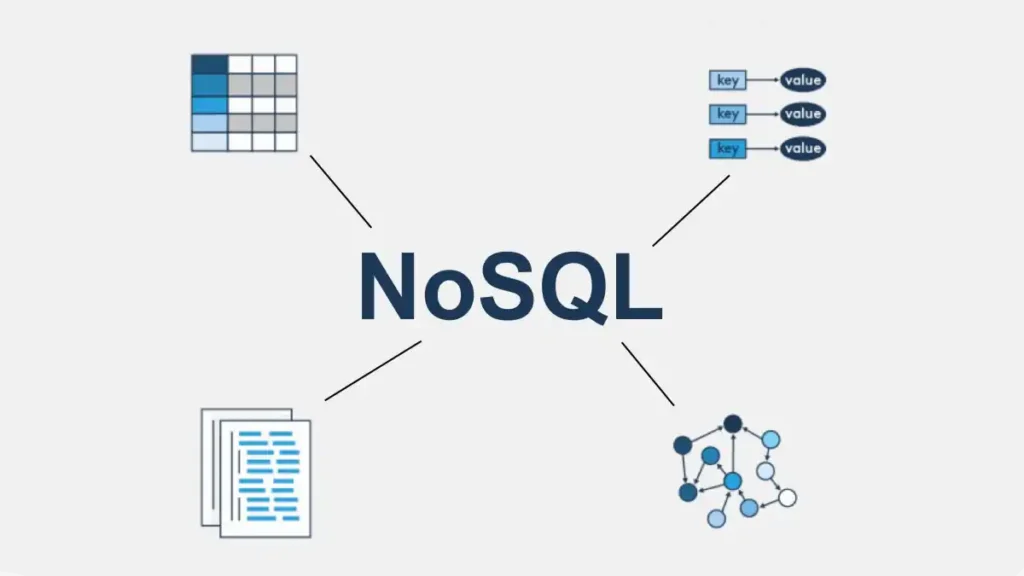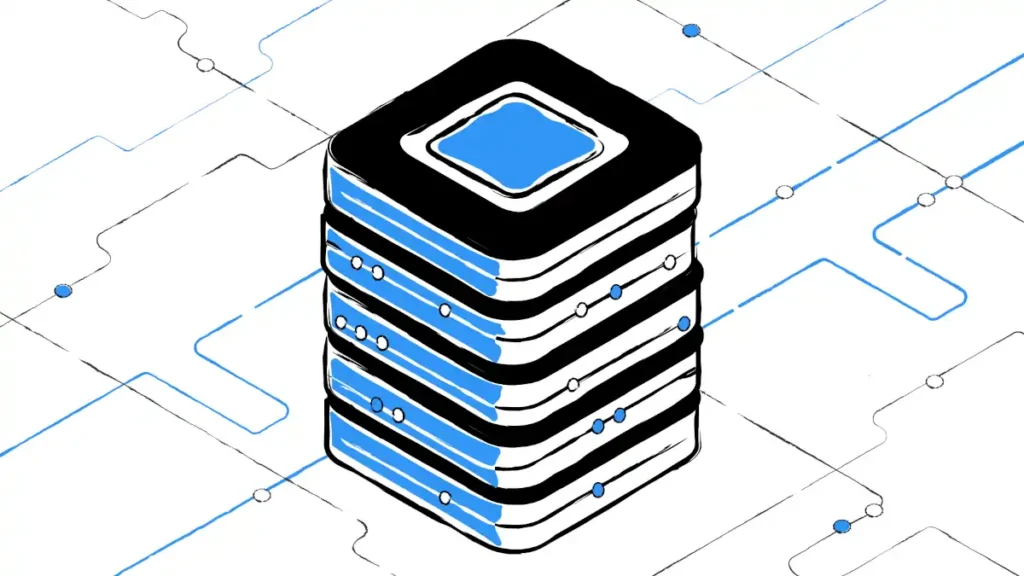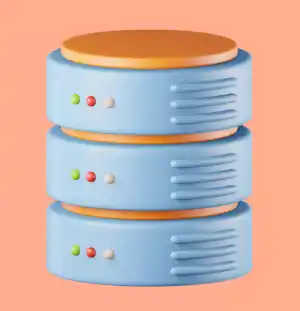In the world of modern data management, NoSQL databases have emerged as a powerful alternative to traditional relational databases. Understanding the fundamental NoSQL database concepts is crucial in today’s data-driven landscape.
In this comprehensive guide, we’re going to dive into the fundamentals of NoSQL databases, including key-value stores, document stores, column-family stores, and graph databases. Gain a solid understanding of NoSQL technology and its applications. Let’s start!
Table of Contents

What is NoSQL Database?
NoSQL, which stands for “Not Only SQL,” is a category of databases that diverges from the rigid structure of traditional relational databases. Unlike relational databases, which rely on tables, rows, and columns, NoSQL databases embrace a flexible schema design, allowing for the storage of unstructured, semi-structured, and structured data.
NoSQL databases come in various forms, including key-value stores, document stores, column-family stores, and graph databases. Each type caters to specific use cases and offers unique advantages. Let’s take a closer look at these NoSQL database types:
Key-Value Store Databases
Key-value store databases operate on the principle of associating a unique key with a corresponding value. These databases excel at high-speed data retrieval and are commonly used for caching, session management, and storing simple data structures.
Document Store Databases
Document store databases store data in flexible, self-describing document formats such as JSON or XML. They provide a natural representation of hierarchical data and are widely adopted for content management systems, real-time analytics, and event-driven architectures.
Column-Family Databases
Column-family databases organize data into columns rather than rows, making them well-suited for handling large-scale, distributed datasets. They offer excellent write and read performance and are commonly used for data warehousing, time series data, and recommendation systems.
Graph Databases
Graph databases excel at representing and querying highly interconnected data. They leverage graph theory to establish relationships between entities, making them ideal for social networks, fraud detection, and knowledge graphs.
Scalability of NoSQL
One of the key advantages of NoSQL databases is their scalability. Traditional relational databases often face limitations when it comes to handling massive data volumes and high-traffic workloads. On the other hand, NoSQL databases are designed to scale horizontally, distributing data across multiple nodes and enabling seamless expansion as data grows.

By adopting distributed architectures and employing techniques such as sharding and replication, NoSQL databases achieve high availability, fault tolerance, and the ability to handle vast amounts of concurrent operations. This scalability makes NoSQL databases an excellent choice for web applications, real-time analytics, and other scenarios where responsiveness and performance are critical.
How NoSQL scalability works
Let’s consider a practical example of how NoSQL scalability works in a web application that handles user-generated content, such as a social media platform.
Imagine you have developed a social media platform that allows users to post messages, share photos, and interact with each other. As your user base grows and the platform gains popularity, the amount of data being generated and accessed increases exponentially. This surge in data poses a scalability challenge for traditional relational databases.
In this scenario, you decide to implement a NoSQL database to handle the scaling requirements efficiently. Here’s how NoSQL scalability comes into play:
- Horizontal Scaling: With NoSQL, you can horizontally scale your database by distributing the data across multiple nodes or servers. As the number of users and data volume increases, you can add additional nodes to the database cluster seamlessly. Each node can handle a subset of the data and share the load, ensuring high availability and improved performance.
- Sharding: Sharding is a technique used in NoSQL databases to partition data across multiple nodes based on a predefined strategy. For example, you can shard the data based on user IDs or geographical regions. This way, each node is responsible for a specific subset of data, allowing for parallel processing and efficient workload distribution.
- Auto-Scaling: NoSQL databases often provide built-in mechanisms or tools to facilitate auto-scaling. With auto-scaling, the database infrastructure can automatically add or remove nodes based on predefined thresholds or metrics, such as CPU utilization or incoming request rates. This dynamic scaling ensures the database can adapt to fluctuating traffic patterns and handle peak loads without manual intervention.
- Replication: NoSQL databases offer replication capabilities, allowing you to create multiple copies of your data across different nodes or data centers. Replication ensures data redundancy, fault tolerance, and improved read performance. In the event of a node failure, the data can be seamlessly retrieved from another replica, ensuring uninterrupted service and minimal downtime.
By leveraging these scalability features of NoSQL databases, your social media platform can handle the growing user base and increasing data volume without sacrificing performance or user experience. The distributed nature of NoSQL databases allows for elastic scalability, ensuring that your application can seamlessly grow as demand increases.
In summary, NoSQL scalability enables your web application to handle massive amounts of data, support high traffic loads, and accommodate the growing user base. By embracing NoSQL technology, you can build scalable and robust applications that can scale horizontally, shard data effectively, auto-scale based on demand, and ensure data availability through replication.
Flexibility in NoSQL
Flexibility is another significant advantage offered by NoSQL databases. Unlike rigidly structured relational databases, NoSQL databases embrace a schema-less or flexible schema approach. This allows for dynamic changes to the data model without the need for expensive schema migrations.

In addition to accommodating evolving data requirements, NoSQL databases excel at handling unstructured and semi-structured data. This flexibility is crucial in today’s data landscape, where organizations deal with diverse data formats, such as social media feeds, sensor data, and user-generated content.
Furthermore, NoSQL databases empower agile development methodologies, allowing developers to iterate quickly and adapt to changing business needs. With NoSQL, organizations can focus on delivering value to their users without being constrained by the limitations of traditional relational databases.
Scalability, flexibility, and performance are at the core of NoSQL database concepts, making them a preferred choice for modern applications.
Conclusion
NoSQL databases have revolutionized the way we handle data in modern applications. By providing scalability, flexibility, and performance, NoSQL databases offer a powerful alternative to traditional relational databases.
In this article, we have explored the fundamental concepts of NoSQL databases, including their various types and their advantages in terms of scalability and flexibility. By embracing NoSQL technology, businesses can unlock the true potential of their data and leverage it to drive innovation and success.
As the digital landscape continues to evolve, NoSQL databases will play a vital role in meeting the ever-increasing demands of data-intensive applications. Embrace the power of NoSQL and propel your organization into the future of data management.
Ready to unlock the potential of NoSQL databases? Dive deeper into the world of NoSQL and discover how it can revolutionize your data infrastructure. Click here to learn more.
References and Books
Here are some highly recommended books that cover various aspects of NoSQL databases:
- “NoSQL Distilled: A Brief Guide to the Emerging World of Polyglot Persistence“, by Pramod Sadalage and Martin Fowler (2012) – This book provides a concise introduction to NoSQL databases, discussing their different types, data models, and appropriate use cases. It explores the benefits and challenges of adopting NoSQL and offers practical guidance for selecting and implementing the right database for your application.
- “Seven Databases in Seven Weeks: A Guide to Modern Databases and the NoSQL Movement“, by Luc Perkins, Eric Redmond, and Jim Wilson (2018) – A hands-on approach to explore seven different databases, including both SQL and NoSQL options. It offers insights into the strengths and weaknesses of each database, allowing readers to compare and contrast their features, data models, and query languages.
- “NoSQL for Mere Mortals“, by Dan Sullivan (2015) – This beginner-friendly book provides a comprehensive introduction to NoSQL databases, explaining their fundamental concepts, data models, and benefits. It covers popular NoSQL databases like MongoDB, CouchDB, and Cassandra, and offers practical examples and use cases to illustrate their usage.
- “MongoDB: The Definitive Guide: Powerful and Scalable Data Storage”, by Shannon Bradshaw, Eoin Brazil, and Kristina Chodorow (2019) – This comprehensive guide focuses specifically on MongoDB, a widely used NoSQL document database. It covers MongoDB’s features, data modeling, indexing, querying, and administration. The book caters to both developers and administrators, providing valuable insights and best practices for building and managing MongoDB-based applications.
- “Cassandra: The Definitive Guide, (Revised) Third Edition: Distributed Data at Web Scale“, by Jeff Carpenter and Eben Hewitt – This authoritative guide is dedicated to Apache Cassandra, a highly scalable and distributed NoSQL database. It covers the fundamental concepts of Cassandra, its data model, architecture, and distributed nature. The book explores data modeling techniques, performance tuning, and operational aspects of managing Cassandra clusters.